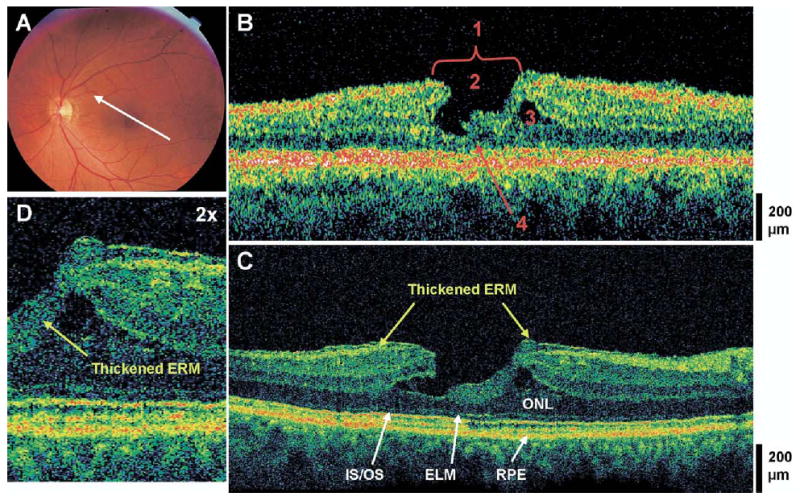Figure 2.

Lamellar hole and thick epiretinal membrane. The patient is a 65-year-old woman who presented with a best-corrected visual acuity of 20/30 in both eyes. She was diagnosed with bilateral lamellar holes 4 years prior. Dilated fundus examination revealed a mild epiretinal membrane (ERM) with a small sharply-circumscribed red lesion in the macula of the left eye. A, Fundus photograph depicting lamellar hole and the direction of the optical coherence tomographic (OCT) scans. B, Stratus OCT image meeting all 4 criteria for the diagnosis of the lamellar hole which are labeled as follows: 1, an irregular foveal contour; 2, break in the inner fovea; 3, separation of the inner from the outer foveal retinal layers; and 4, absence of a full thickness foveal defect with intact foveal photoreceptors. C, The corresponding ultrahigh-resolution optical coherence tomographic (UHR OCT) image, which also shows a thick ERM of moderate reflectivity. The photoreceptors (outer nuclear layer [ONL], the inner/outer segment junction [IS/OS], and the external limiting membrane [ELM]) are intact across the macula. D, Magnification (×2) of the UHR OCT image shows the thick ERM of moderate reflectivity dipping posteriorly into the area of foveal dehiscence. RPE = retinal pigment epithelium.
